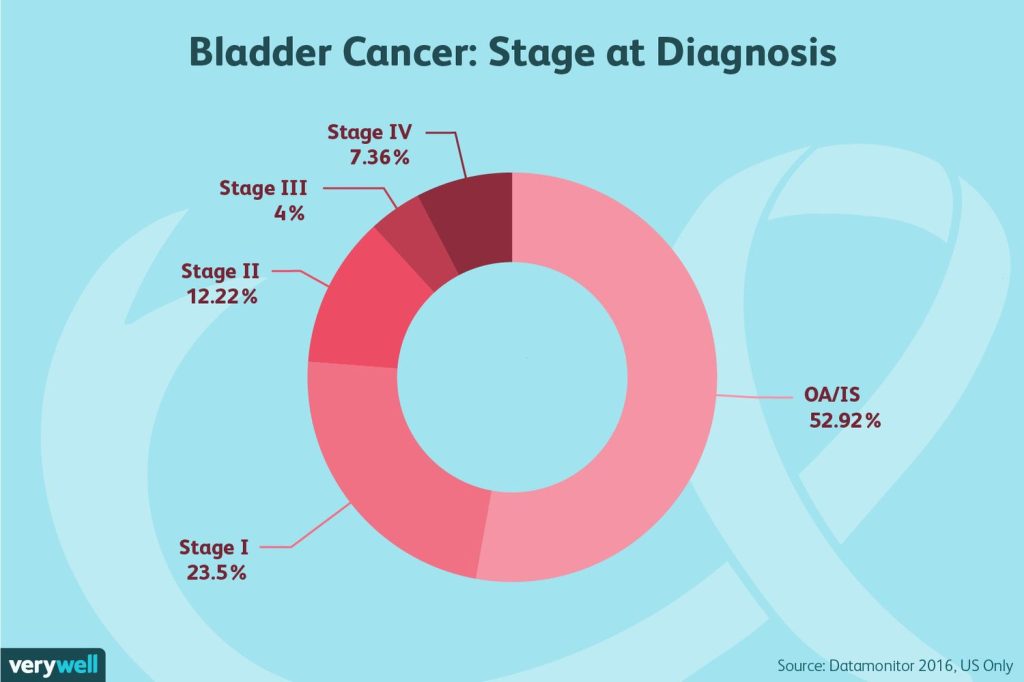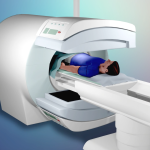A cystoscopy is a test to look at the inside of your bladder and tube that carries urine from your bladder out of your body (urethra). It uses a thin tube called a cystoscope.
There are different types of cystoscopies:
- flexible cystoscopy
- rigid cystoscopy
- narrow band imaging (NBI), blue light cystoscopy or photodynamic diagnosis (PDD)
Your doctor will discuss with you what type of cystoscopy you’re having.
Flexible cystoscopy
The flexible cystoscope has optic fibres inside it, a light and camera attached to it. Because it’s flexible it can bend around the tubes as it passes through your urethra. This is generally done under local anaesthetic. So you are awake for this test.
Your doctor uses a flexible cystoscopy to look inside your bladder. They can examine the lining of your bladder and find out what is causing your symptoms. They can also take small samples of tissue (biopsies) during this procedure.
A flexible cystoscopy in a man
A flexible cystoscopy in a woman
Rigid cystoscopy
The rigid cystoscopy uses a hard straight tube. It also has a light and camera attached to it. Because it’s not flexible you usually have a rigid cystoscopy under general anaesthetic. So you are asleep for this test.
You might have a rigid cystoscopy if you have biopsies taken or need treatment for a problem with your bladder.
A rigid cystoscopy in a women
A rigid cystoscopy in a man
The camera links to a TV monitor so if you’re awake you may be able to watch the procedure.
If necessary, the doctor can pass small instruments down the cystoscope. This is to take biopsies from the bladder lining.
Narrow band imaging (NBI)
You might have a type of flexible cystoscopy called narrow-band imaging (NBI). This uses wavelengths of blue and green light.
Bladder lesions and tumours usually have a good blood supply. Blood absorbs blue and green light better than other colours. So this test shows up areas in the bladder that the doctor needs to examine closely. It helps them find bladder tumours.
This is a new test and might not be available at your hospital.
Blue light cystoscopy or photodynamic diagnosis (PDD)
This is another type of cystoscopy using a blue light instead of a white light to pick up bladder cancer. You usually have it under general anaesthetic.
To have the test your doctor puts a thin tube (catheter) into your bladder. They then put a fluorescent dye called hexyl aminolevulinate (HAL) through the tube.
The dye stays in for an hour before your cystoscopy. Then your doctor puts the flexible cystoscope into your bladder. This has a camera and blue light. Any cancer cells absorb the dye and glow red or pink when the blue light is shone on them. This makes them easier to see.
This is a new test and might not be available at your hospital.
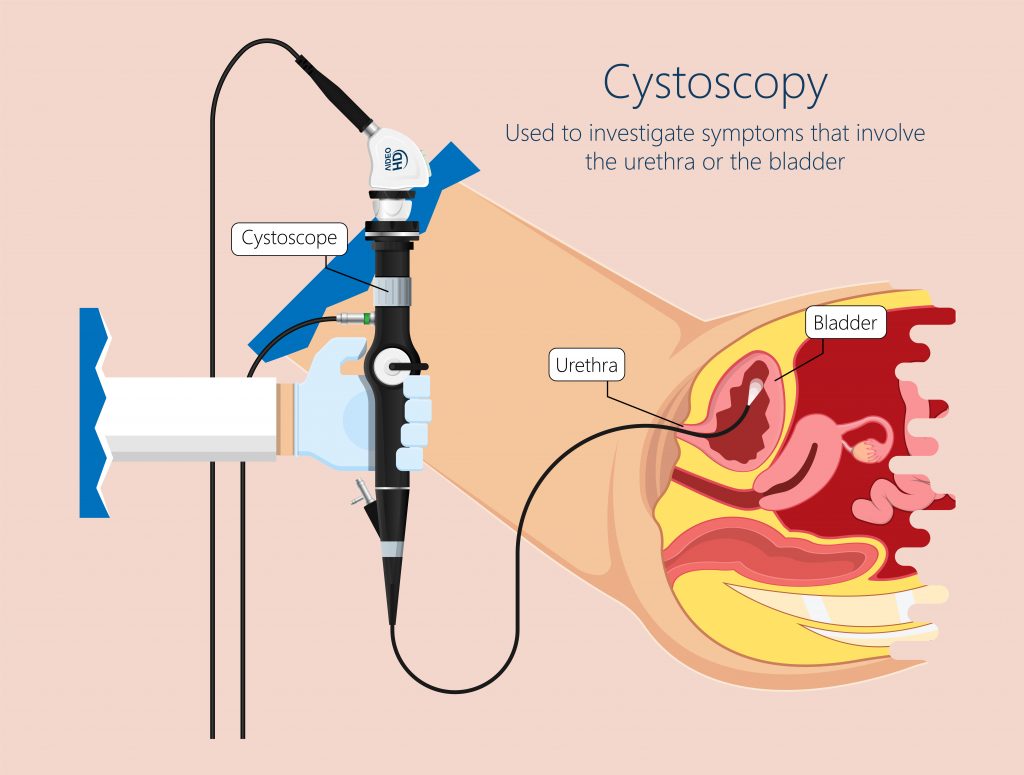
Why you might have a cystoscopy
You may have this test if you’re passing blood when you wee. Or you’re having problems passing urine, such as:
- being unable to empty your bladder properly (retention)
- you’re unable to control when you need to wee (incontinence)
- going more frequently than usual
This is the most important test for diagnosing cancer of the bladder. As well as examining the bladder your doctor can take samples of the bladder lining (biopsies) to check for cancer cells.
Other reasons you might have a cystoscopy is to check:
- whether your cancer has come back
- for spread from another type of cancer
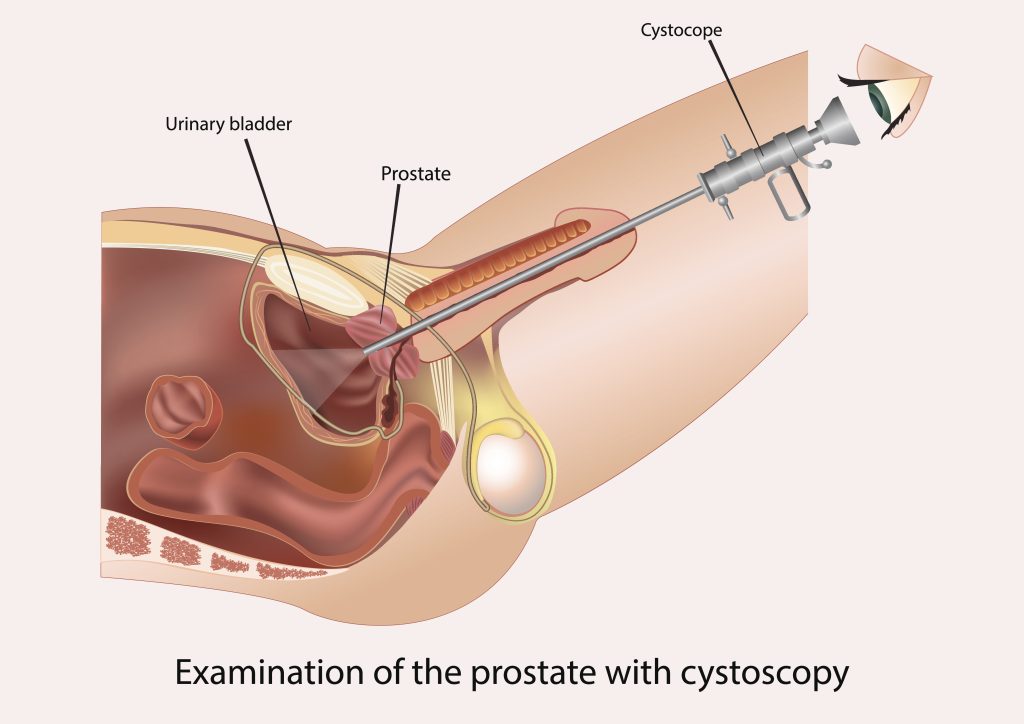
What happens
Cystoscopy under local anaesthetic
This test takes about 10 minutes. You usually have it at a hospital as an outpatient.
You can eat and drink normally beforehand.
A doctor or nurse will explain the procedure and ask you to sign a consent form. This is a good time to ask any questions you may have.
Before you have the test the nurse will ask you to empty your bladder (have a wee). They may also ask you to give a urine sample to check for an infection.
You undress from the waist down and put a hospital gown on. You lie on your back on the bed or couch.
The doctor places a sterile sheet over you. They clean the area and squeeze some anaesthetic jelly into the tube where your urine comes out (urethra). This makes the area numb. In men, this means squeezing the jelly down the penis. This doesn’t hurt but can feel uncomfortable.
Once the local anaesthetic is working, the doctor gently passes the cystoscope into your urethra until it reaches the bladder.
In men, they may ask you to try and pass urine so the cystoscope passes the muscle clamp (sphincter) in the urethra. Or they may ask you to cough. It helps the doctor pass the tube more easily. Don’t worry, you won’t actually pass urine. But you may feel some stinging when it passes this point.
Once in the bladder, they fill it with sterile water. You may feel like you need to go to the toilet.
The doctor then moves the tube around so they can look at the inner surface of the whole of the inside of your bladder.
They may take some samples of your bladder tissue (biopsies) or they may remove small bladder growths.
At the end of the test, you’ll want to go to the toilet.
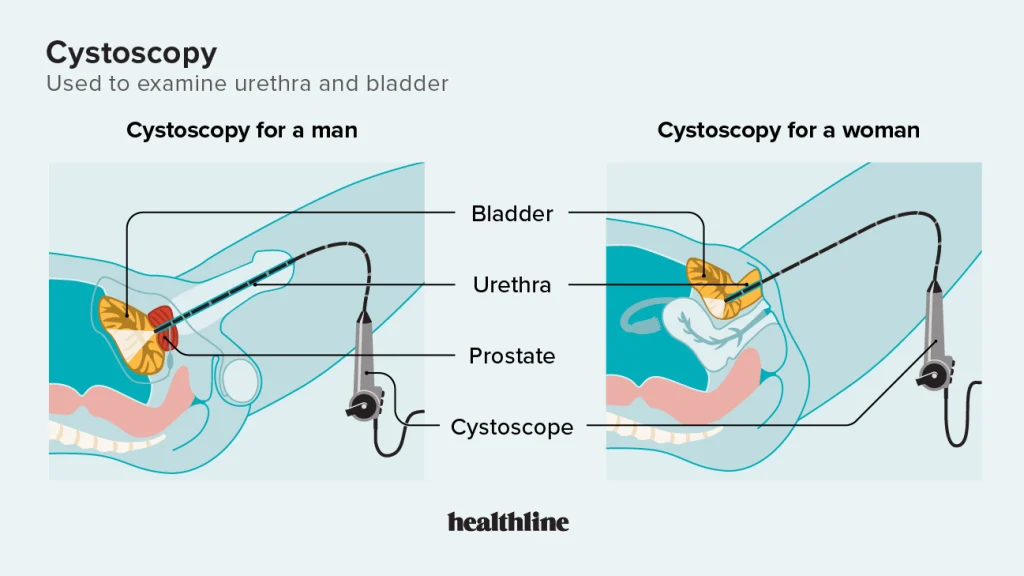
Cystoscopy under general anaesthetic
You have this test at the hospital in the day surgery unit.
Before the test
You’re usually seen in the pre-assessment clinic by a nurse a week or two beforehand.
They’ll take some measurements (weight, temperature, heart and breathing rate, oxygen levels and your blood pressure).
You may have some blood tests and other tests such as a chest x-ray. This is routine for anyone having a general anaesthetic.
At this appointment, they will give you instructions about the test and what to bring on the day. It’s a good idea to bring an overnight bag. They’ll also tell you when to stop eating and drinking. This is usually 6 hours before you have this test.
They’ll ask you about any regular medication you’re on and what you can take on the day. They’ll also want you to bring them in on the day of the procedure.
On the day
On the day of your test you’ll see the doctor who will explain the procedure and ask you to sign a consent form. This is a good time for you to ask any questions.
You’ll also meet your anaesthetist who will get you to sleep and look after you while you’re asleep.
Before the test, the nurse will ask you to empty your bladder. They may also ask you to give a urine sample to check for any infection.
You usually have a small tube put into your vein (cannula) before you have the anaesthetic. This is so they can give you medicines directly into your vein. Most hospitals also give you an injection of antibiotics before the test.
You change into a hospital gown. Once they’re ready they’ll ask you to lie down on the theatre trolley. The trolley is wheeled down to the operating theatre, where you have the anaesthetic.
In some hospitals, instead of a general anaesthetic, you may have a spinal anaesthetic. The anaesthetist puts an injection into your spine (epidural) so that you cannot feel anything from below your waist. This means you would be awake for the test.
Once you are asleep the doctor gently passes the cystoscope into your bladder through your urethra.
They then fill your bladder with sterile water. They take a look at the inside of your bladder and urethra using the cystoscope.
If they need to they will take samples of tissue (biopsies) from any areas that look abnormal. Your doctor may also take biopsies from areas of bladder lining that look normal. This helps to make sure of the diagnosis. The biopsied areas are sealed with a hot probe afterwards (cauterised) to help stop any bleeding.
After the test
You go to a recovery area to rest after an anaesthetic. Your nurse monitors you. They offer you a snack and drink when you are ready. You might be in recovery area for a couple of hours.
You can usually go home the same day once you’ve passed urine successfully. But this will depend on:
- how many biopsies were taken
- how you react to the anaesthetic
- the time of day you have the anaesthetic – if it is very late in the day, it may be better for you to stay overnight
If there are large tumours which need treatment, you will need to stay longer and you may need a catheter (a tube into the bladder to drain urine) for a few days after the operation.
As you’re having a general anaesthetic you’ll need someone with you so they can take you home and stay with you overnight. Also for 24 hours after you shouldn’t drive, drink alcohol, operate heavy machinery or sign any legally binding documents.

A cystoscopy is a test to look at the inside of your bladder. The bladder stores urine and when we empty it the urine passes from the bladder down a tube called the urethra and out of the body.
The urethra in men passes through the prostate gland and down the penis.
In women the urethra is much shorter and passes from the bladder down to an opening just in front of the vagina.
You have the test lying on your back on a couch. The doctor cleans around the opening to the bladder.
Then they put anaesthetic jelly into the tube where urine comes out. This doesn’t hurt but can be uncomfortable.
Once the anaesthetic has worked they put a long flexible tube called a cystoscope into the opening and up into the bladder.
You may find this uncomfortable and feel like you need to pass urine. The doctor puts water in through the scope to make it easier to see the bladder wall
The tube has a light and a camera on the end. This sends pictures to a monitor.
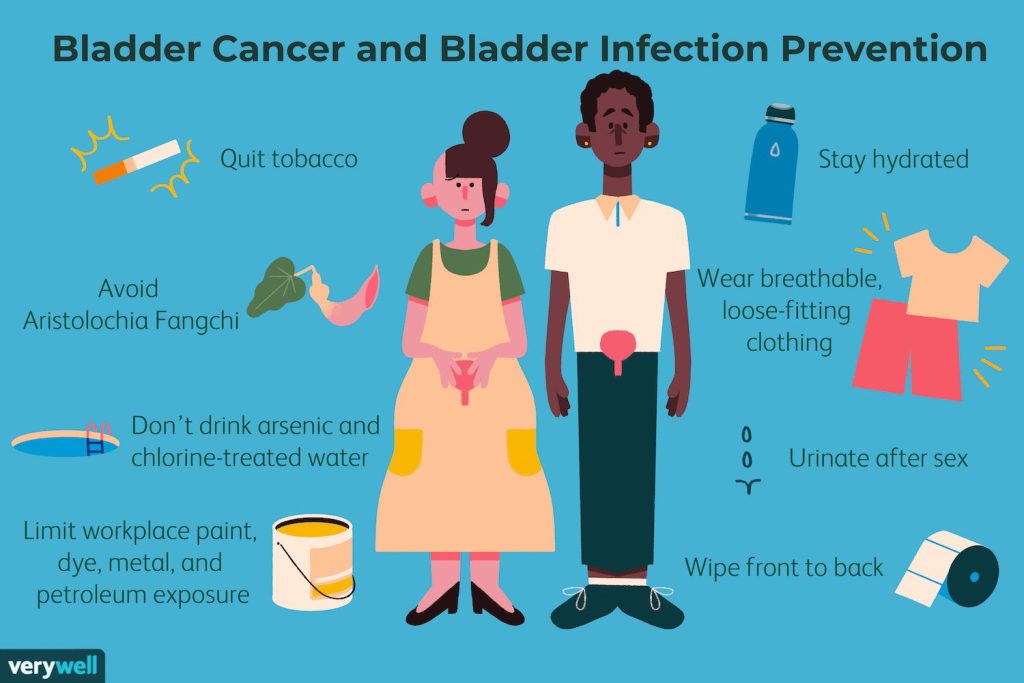
Possible risks
Most people do not have problems after having a cystoscopy but as with any medical procedure, there are possible risks.
You might have mild burning or stinging when you pass urine. It may also look slightly blood stained for a day or two. Drinking plenty should help with this. They will ask you to drink twice as much as you usually drink for the first 24 – 48 hours.
You should contact the hospital or your GP immediately if:
- you’re still bleeding 48 hours after your test
- the bleeding is getting worse
- there are blood clots in your urine
- you have severe pain when passing urine
- you’re unable to pass urine
There is a small risk of infection. Symptoms can include:
- going to the toilet more often
- burning and stinging when passing urine
- high temperature
- feeling hot and cold or shivery
- cloudy or offensive smelling urine
- generally feeling unwell
If you think you have an infection, you should go to your GP. They can prescribe antibiotics to treat the infection.
Rarely, you may have difficulty passing urine after cystoscopy. If this happens, you may need a catheter for a short time. There is also a risk of delayed bleeding and damage to the bladder wall or urethra.
You should get your results within 1 or 2 weeks at a follow up appointment.
Waiting for test results can be a very worrying time. You might have contact details for a specialist nurse who you can contact for information if you need to. It can help to talk to a close friend or relative about how you feel.
